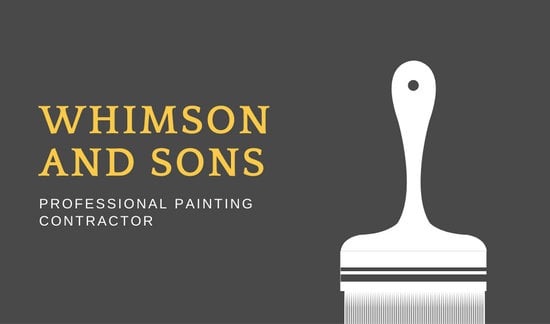Seasonal Factors In Commercial Exterior Painting: Trick Insights You Need To Know
Seasonal Factors In Commercial Exterior Painting: Trick Insights You Need To Know
Blog Article
Article Composed By-Doherty Celik
When you're planning an industrial external paint project, seasonal factors can make or break your outcomes. You'll intend to think about how temperature and moisture influence paint application and drying times. Choosing the right season can guarantee your paint sticks appropriately and lasts longer. But which periods are genuinely the very best for this type of work? Let's check out the crucial elements that can influence your job's success.
The Influence of Temperature Level on Paint Application
When you're planning a commercial exterior paint project, the temperature can significantly affect how well the paint sticks and dries out.
Ideally, you want to paint when temperatures range in between 50 ° F and 85 ° F. If it's as well chilly, the paint may not cure properly, resulting in problems like peeling off or breaking.
On the other side, if it's too hot, the paint can dry too rapidly, avoiding appropriate attachment and leading to an uneven finish.
You should additionally take into consideration the moment of day; early morning or late afternoon offers cooler temperature levels, which can be much more beneficial.
Always examine the manufacturer's suggestions for the particular paint you're using, as they usually provide support on the ideal temperature level range for ideal outcomes.
Moisture and Its Impact on Drying Times
Temperature level isn't the only ecological aspect that affects your industrial external paint project; moisture plays a significant role as well. High moisture degrees can slow down drying times drastically, impacting the total high quality of your paint work.
When the air is filled with moisture, the paint takes longer to treat, which can cause problems like bad attachment and a higher danger of mildew growth. If you're repainting on a particularly moist day, be planned for prolonged delay times in between coats.
It's vital to keep track of local weather and strategy as necessary. Preferably, aim for moisture degrees between 40% and 70% for ideal drying out.
Keeping these consider mind guarantees your task remains on track and supplies a lasting surface.
Best Seasons for Commercial Outside Paint Projects
What's the most effective time of year for your commercial exterior paint projects?
Spring and very early loss are normally your best options. Throughout https://localpaintersnearme22119.tusblogos.com/34617699/vital-queries-to-pose-prior-to-involving-home-painters , temperature levels are moderate, and humidity levels are frequently lower, producing ideal conditions for paint application and drying out.
Avoid summer season's intense heat, which can create paint to dry also rapidly, resulting in inadequate bond and coating. In a similar way, wintertime's cold temperatures can hinder appropriate drying out and healing, taking the chance of the long life of your paint task.
Go for days with temperature levels between 50 ° F and 85 ° F for ideal outcomes. Keep in stellar paints to check the neighborhood weather forecast for rain, as wet problems can destroy your project.
Planning around these elements guarantees your painting task runs smoothly and lasts much longer.
Conclusion
Finally, planning your commercial outside paint jobs around seasonal considerations can make a significant distinction in the end result. By scheduling job during the ideal temperature levels and humidity levels, you'll make sure better attachment and drying out times. Keep in what happens if you use expired paint to watch on local weather forecasts and select the right time of year-- springtime and early autumn are your best bets. Taking these steps will help you attain a resilient and expert finish that lasts.
